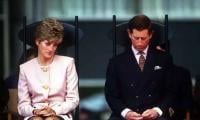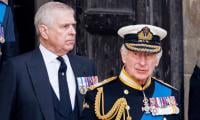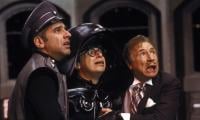Pakistan Day-March 23- reminds the Pakistani nation of the indepen dence movement, its contours, and dynamics. The day also highlights its myriad connotations-a distinct Muslim identity, struggle, leadership, and much more. As we reflect on that point in time in the history of the sub-continent, we encounter chaos and turbulence, a body politic seething with discontent, and two communities vying for dominance in the political scene, both struggling for independence from British rule. This serves as the politi cal context of the Resolution. As we look back at that time, two important points stand out in the struggle, Di versity, and Unity, diversity of a huge country, and unity of the Muslim nation, despite many odds and obstacles. At the time of independence, India was a huge country, extending thousands of miles, east to west, and north to south. Interestingly, the Muslim population was rather evenly spread, particularly, in Bengal in the east, the frontier province in the west, in northern India, particularly Punjab and UP, in Deccan in the center, and in the south. In the west, the province of Sindh was also politically active. Incidentally, it was the Sindh Provincial League that, in a conference at Karachi, in 1938 put forth the demand for Pakistan. Other proposals for the division of India were also given. One came from Sir Sikandar Hayat Khan, Chief Minister of Punjab, in 1938. He suggested the division of India into seven areas; the Seventh area comprised ‘Pun jab plus Sind plus NWFP, plus Kashmir, plus the Punjab states, plus Baluchistan, plus Bikaner and Jaisalmer.’ Another plan, coming out of Aligarh in 1935, saw division of India into three sovereign states: 1. North west India, including Punjab, NWFP, Sind, and Baluchistan; 2. Bengal, including parts of Assam and Bihar; 3. Hindus tan, comprising the other regions of India. Interestingly, these divisions were basically based on Muslim-Hindu divide. It is interesting to note that all the proposals for the new country included regions that would become part of Pakistan. By 1940, political cleavage between the Muslims and Hindus was complete. The two communities were referred to as ‘two distinct and separate’ civilizations. The Hindu leadership was vying for influence, and for dominating the new political setup. The year 1940 saw the cli max of nationalist sentiment, as the British were more involved in the war going on in Europe. At the Lahore ses sion of the Muslim League, Mr Jinnah was equivocal for the freedom of India. He also declared that it must be freedom for all India and not just for one section. He was echoing the sentiments of a majority of the Indian Muslims. His message was clear, for the British and the Hindus. The final touch was given by Fazlul Haq; he called for carving out ‘geographically contiguous units’ into Inde pendent States that were autonomous and sovereign. He was referring to Muslim ma jority areas in the North-Western and Eastern zones of India. The idea of Pakistan thus took concrete form at the his toric session of the Muslim League. At its next annual session at Madras, in 1941, these objectives were made part of the Leagues objectives. It is worth noting here that the geographic and cultural diversity that India reflected during the freedom struggle found reflection in the leadership. Poignantly, Mr Jinnah, who spearheaded the struggle had a distinct per sona and lifestyle; his team included nawabs and scholars from different regions. He was able to bring together Muslim leaders from all over India, and galvanised the sup port of the Muslims. This helped strengthen the case for Pakistan in tough negotia tions with the British and the Hindus. The passage of the Pakistan Resolution, and the de mand for Pakistan has many lessons for today’s Pakistan; the role of leadership in lead ing the nation; building consensus on national issues; building a liberal democratic order; and turning diversity into unity. The Founding Fathers’ ex emplary character, as well as contribution to the freedom movement serves as a guiding light to those who seem to be losing hope in the ideals that made Pakistan a reality. Today’s leadership as well as its youth need to take guid ance from such ideals. -The writer is a former faculty member of Quaid-i-Azam University. He can be reach















